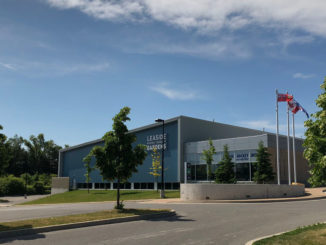An enraged Leasider wrote to me recently. He’d spotted a car being driven west at 53 km/h in the 40 km/h zone along Millwood Rd., as clocked by the speed detector sign at Rumsey. The driver maintained this speed, zooming past the intersection to beat the traffic light at Millwood and McRae where Georgia Walsh died.
The speed limit is clearly posted and the speed detector flashed to indicate excessive speed. So the Leasider was really annoyed. But what really got to him was that the car driving behind the speeder was a police car. He wrote down the number of the police car, and the time, and sent them to me, along with his rant: Why didn’t the police officer stop the driver and issue him with a speeding ticket?
I wrote to Councillor Jon Burnside, a former police officer with solid experience in traffic enforcement. Why would an officer apparently ignore such speeding?
The speed indicator sign, like the one on Millwood, would not be admissible in court. To have admissible evidence, the officer would have to be using a radar or laser, or “pace” the speeder, and pacing requires a greater distance to allow the officer to calibrate his or her speedometer to the other driver’s speed.
It’s unusual for an officer to stop a driver for doing less than 15 km/h over the speed limit, 16 km/h being the point at which demerit points can be applied. It also takes up to 15 minutes to issue a ticket, which raises the issue of cost effectiveness and, especially regarding tickets for lower speed infractions, might keep police from catching more dangerous drivers.
Councillor Burnside says he’d have stopped the speeder and had a word with him; but given the above considerations it’s a matter of the individual officer’s judgement.
While understandable, the rationale doesn’t do anyone any good. It creates unsafe situations, it permits and even encourages drivers to disrespect the law, and it enrages the law-abiding.
I write about this event because it is not a once-only occurrence: police enforcement of traffic signage, or more correctly LACK of police enforcement, continues to be an issue for many Leasiders.
Are you a bicyclist? If so, do you feel as if you’re taking your life in your hands when you try to get safely across town?
Are you a pedestrian, who all too frequently has to move over because a bicyclist races past you on the sidewalk?
Are you a driver, playing dodgems with bicyclists weaving through traffic and past stop signs and traffic lights?
With any luck, our streets and sidewalks may be made safer for all in the future.
In mid-June, City Council approved a new 10-year cycling network plan. Over the next two years, the backbone of a minimum grid will be laid out, focusing on Toronto’s key streets.
Origin/destination studies will be made, and a street network will be designed, involving major streets and, eventually, residential and non-arterial roads as well. Neighbourhoods such as Leaside are in line for designated bicycle lanes on selected residential streets. Nothing will happen before consultation meetings identify possible local bicycle routes, and address potential contentious aspects, such as impacts on residents’ on-street parking. I made a number of phone calls to the city and groups such as Cycle Toronto, and am assured that these local consultation meetings will be well publicized. LPOA will post dates and details on our website as soon as we have them.
Since June 20, the new South Bayview 28 bus has been in full operation, with a 20-minute weekday (and 30-minute weekend) schedule. Check the LPOA web site (lpoa.ca) for full details!
We have also asked the TTC to post notices on bus stops along Bayview, to inform pedestrians and would-be riders about the new route. Make a point of riding the bus to go to and from shopping, or Sunnybrook Hospital appointments, or the Evergreen farmers’ market, or just for a pleasant excursion!
Remember: if ridership increases, the TTC says it will provide more frequent service.





